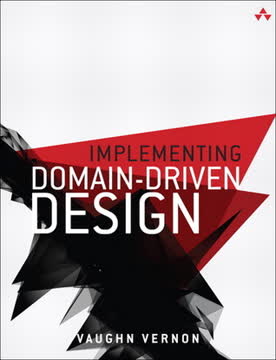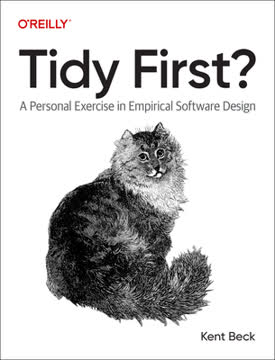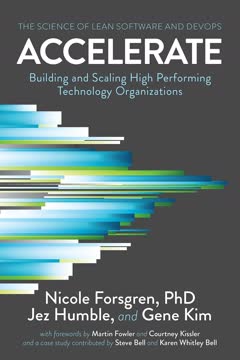Key Takeaways
1. Eliminate waste to streamline software development
If something does not directly add value as perceived by the customer, it is waste.
Identify and remove waste. In software development, waste can take many forms: partially done work, extra processes, extra features, task switching, waiting, motion, and defects. To eliminate waste, teams should focus on activities that directly contribute to creating value for the customer.
Use value stream mapping. This tool helps visualize the flow of work from customer request to delivery. By mapping the value stream, teams can identify areas of waste and inefficiency. Look for:
- Long wait times between steps
- Unnecessary handoffs or approvals
- Redundant or non-value-adding activities
- Bottlenecks in the process
Once waste is identified, work to streamline the process by removing or reducing non-value-adding activities. This may involve simplifying workflows, automating repetitive tasks, or reorganizing teams to improve communication and reduce handoffs.
2. Amplify learning through feedback and iterations
Iterations are points of synchronization across individual and multiple teams and with the customer.
Embrace iterative development. Short, frequent iterations allow teams to gather feedback quickly and make adjustments. This approach promotes learning and adaptation throughout the development process. Key benefits include:
- Early detection of issues and misunderstandings
- Reduced risk of building the wrong thing
- Increased stakeholder engagement and alignment
Implement feedback loops. Establish multiple feedback mechanisms to amplify learning:
- Daily stand-up meetings for team coordination
- Regular demos to stakeholders for product feedback
- Automated tests for immediate code quality feedback
- Retrospectives for process improvement
Use these feedback loops to continuously refine the product and improve development practices. Encourage a culture of experimentation and learning from both successes and failures.
3. Delay decisions to maintain flexibility and reduce risk
Delaying decisions is valuable because better decisions can be made when they are based on fact, not speculation.
Practice options thinking. Instead of making early commitments, keep options open as long as possible. This approach allows teams to:
- Gather more information before making decisions
- Adapt to changing requirements or market conditions
- Reduce the risk of costly mistakes or rework
Identify the last responsible moment. For each decision, determine the latest point at which a choice must be made without negatively impacting the project. This requires:
- Understanding dependencies and lead times
- Balancing the cost of delay against the value of additional information
- Developing a keen sense of timing for decision-making
By delaying decisions, teams can maintain flexibility and make more informed choices based on the latest available information. This approach is particularly valuable in rapidly changing or uncertain environments.
4. Deliver quickly to provide value and gather feedback
The way to reduce the impact of defects is to find them as soon as they occur.
Implement pull systems. Use customer demand to drive development priorities and work flow. This ensures that teams are always working on the most valuable features. Key elements of a pull system include:
- Short iterations with clear goals
- Visual management of work in progress
- Limiting work in progress to maintain flow
Focus on rapid delivery. Strive to deliver working, tested software as quickly as possible. Benefits of rapid delivery include:
- Earlier return on investment for stakeholders
- Faster feedback cycles for learning and improvement
- Increased motivation and sense of progress for the team
To enable rapid delivery:
- Break work into small, manageable chunks
- Automate testing and deployment processes
- Prioritize removing bottlenecks in the development pipeline
By delivering quickly and frequently, teams can provide continuous value to customers and maintain a rapid learning cycle.
5. Empower teams for better decision-making and motivation
Satisfaction Guaranteed or Your Money Back.
Foster self-organization. Give teams the autonomy to make decisions and solve problems. This approach leads to:
- Faster decision-making closer to the work
- Increased ownership and accountability
- Better solutions leveraging team members' diverse expertise
Create a motivating environment. Build a culture that supports intrinsic motivation:
- Provide a clear sense of purpose and meaningful work
- Ensure team members feel competent and valued
- Allow for autonomy in how work is accomplished
- Celebrate progress and achievements regularly
Leadership's role shifts from directing work to:
- Communicating clear goals and constraints
- Removing obstacles and providing resources
- Coaching and mentoring team members
- Facilitating cross-team collaboration
Empowered teams are more engaged, productive, and adaptable to changing circumstances.
6. Build integrity into software through conceptual consistency
Conceptual integrity means that a system's central concepts work together as a smooth, cohesive whole.
Strive for perceived integrity. Ensure that the software meets user expectations and provides a cohesive experience. This involves:
- Understanding user needs and mental models
- Maintaining consistency in user interface and interactions
- Providing features that work well together to solve user problems
Maintain conceptual integrity. Develop a clear, consistent architecture that supports the system's purpose. Key practices include:
- Establishing clear design principles and patterns
- Regularly refactoring to maintain simplicity and clarity
- Ensuring that new features align with the overall system concept
Implement continuous integration and testing. Use automated builds and tests to catch integration issues early and maintain system integrity throughout development. This includes:
- Unit tests to verify individual components
- Integration tests to ensure components work together
- Acceptance tests to validate system behavior from a user perspective
By focusing on both perceived and conceptual integrity, teams can create software that is not only functionally correct but also intuitive and maintainable.
7. See the whole system to avoid suboptimization
If today's problems come from yesterday's solutions, then tomorrow's problems will come from today's solutions.
Adopt systems thinking. View the software development process as a complex system with interdependent parts. This perspective helps:
- Identify unintended consequences of local optimizations
- Understand how changes in one area affect the whole system
- Find leverage points for improving overall system performance
Avoid local optimization. Be cautious of metrics or practices that may improve one area at the expense of the whole:
- Evaluate the impact of changes on the entire value stream
- Look for systemic causes of problems rather than quick fixes
- Consider long-term consequences of short-term decisions
Use appropriate measurements. Choose metrics that encourage system-wide improvement:
- Focus on outcomes rather than outputs
- Measure cycle time and throughput for the entire process
- Use leading indicators that predict future performance
By seeing the whole system, teams can make decisions that improve overall performance and avoid creating new problems while solving existing ones.
Last updated:
FAQ
1. What is "Lean Software Development: An Agile Toolkit" by Mary Poppendieck about?
- Lean principles for software: The book adapts seven core lean principles from manufacturing to software development, focusing on eliminating waste, amplifying learning, and empowering teams.
- Toolkit for leaders: It offers 22 practical thinking tools to help leaders design agile practices tailored to their unique environments, rather than prescribing a rigid methodology.
- Bridging lean and agile: The authors connect lean industrial practices, such as those pioneered by Toyota, with agile software development, providing both theoretical foundations and actionable guidance.
2. Why should I read "Lean Software Development: An Agile Toolkit" by Mary Poppendieck?
- Addresses common software challenges: The book tackles issues like waste, delayed feedback, poor decision-making, and lack of team empowerment prevalent in traditional software development.
- Proven improvement methods: It demonstrates how lean principles can improve quality, reduce costs, and speed up delivery in software projects.
- Focus on people and processes: Emphasizes motivation, leadership, and team empowerment to unleash the full potential of development teams.
3. What are the key takeaways from "Lean Software Development: An Agile Toolkit"?
- Seven lean principles: Eliminate waste, amplify learning, decide as late as possible, deliver as fast as possible, empower the team, build integrity in, and see the whole system.
- Practical tools and case studies: The book provides 22 actionable tools and real-world examples from companies like Toyota, 3M, and NUMMI.
- Human-centric management: Highlights the importance of respecting and empowering workers, and the role of leadership in fostering motivation and expertise.
4. What are the seven lean principles in "Lean Software Development: An Agile Toolkit" by Mary Poppendieck?
- Eliminate waste: Remove anything that does not add value to the customer, such as extra features or unnecessary processes.
- Amplify learning: Use feedback loops and iterative development to enhance knowledge and product quality.
- Decide as late as possible: Delay irreversible decisions to reduce risk and improve decision quality.
- Deliver as fast as possible: Shorten feedback loops and deliver value to customers quickly.
- Empower the team: Give decision-making authority to those doing the work for better outcomes.
- Build integrity in: Ensure both perceived and conceptual integrity in software design and delivery.
- See the whole: Optimize the entire system, not just individual parts, to avoid suboptimization.
5. How does Mary Poppendieck define and address "waste" in software development?
- Waste as non-value adding: Anything not directly adding value for the customer, such as partially done work, extra processes, or unnecessary features, is considered waste.
- Seven wastes adapted: The book adapts Shigeo Shingo’s seven manufacturing wastes to software: partially done work, extra processes, extra features, task switching, waiting, motion, and defects.
- Continuous elimination: Organizations should continuously identify and eliminate the biggest sources of waste to improve flow and value delivery.
6. How does "Lean Software Development: An Agile Toolkit" by Mary Poppendieck explain the importance of feedback and iterations?
- Feedback loops are essential: Feedback provides control and predictability in complex software development, similar to sensors in other systems.
- Iterative development: Short, fixed-time iterations produce working, tested software increments, enabling rapid feedback and learning.
- Negotiable scope and convergence: Iterations help focus on high-priority features and allow for continuous adjustment and learning.
7. What does "Decide as Late as Possible" mean in Mary Poppendieck's lean software development approach?
- Concurrent development: Delay irreversible decisions to keep options open and reduce costly changes, inspired by Japanese concurrent engineering.
- Options thinking: Make decisions at the last responsible moment, using facts rather than speculation to reduce risk.
- Simple rules and empowerment: Empower teams with clear rules to make local decisions without chaos.
8. How does "Lean Software Development: An Agile Toolkit" by Mary Poppendieck recommend delivering software as fast as possible?
- Rapid delivery benefits: Fast delivery satisfies customers sooner, reduces work-in-process, and lowers risk.
- Pull systems and kanban: Use pull systems and short iterations to make work self-directing and responsive to customer demand.
- Queuing theory: Manage batch sizes, variability, and bottlenecks to reduce cycle time and improve flow.
9. What does "Empower the Team" mean in Mary Poppendieck's lean software development philosophy?
- Worker-centered management: Give teams responsibility for designing their own work procedures and quality, with management acting as coaches.
- Motivation and purpose: Foster intrinsic motivation through self-determination, purpose, competence, belonging, safety, and progress.
- Leadership roles: Distinguish between managers and leaders, with leaders inspiring and guiding teams without micromanaging.
10. What are the key thinking tools and methods introduced in "Lean Software Development: An Agile Toolkit"?
- Value stream mapping: Visualize the flow of work to identify waste and bottlenecks.
- Set-based development: Develop multiple options concurrently and communicate constraints to let the best solution emerge.
- Last responsible moment: Delay decisions until the point where not deciding would eliminate valuable options.
- Cost of delay: Quantify the economic impact of delays to prioritize work and justify investments in speed.
- Information radiators: Use visual tools like kanban boards and burn-down charts to make work status and problems visible.
11. How does Mary Poppendieck address leadership, master developers, and team dynamics in agile software development?
- Respected leaders vs. managers: Leaders set direction and motivate teams, while managers focus on planning and control.
- Master developers: Technical leaders emerge through expertise and guide teams by understanding both customer needs and technical challenges.
- Leadership development: Organizations should cultivate master developers through mentorship and dual career ladders, enabling technical leadership to flourish.
12. How does "Lean Software Development: An Agile Toolkit" by Mary Poppendieck recommend handling contracts and measurements in agile environments?
- Trust over control: Build trust with suppliers and partners through fair routines and processes, not just rigid contracts.
- Flexible contract types: Use contracts that allow for optional scope, frequent delivery, and shared risks and rewards.
- System-wide measurements: Focus on measurements aligned with business value and system-wide flow, avoiding local optimization and blame-oriented metrics.
Review Summary
Lean Software Development by Mary and Tom Poppendieck is highly praised for its practical application of lean principles to software development. Readers appreciate its focus on eliminating waste, empowering teams, and delivering customer value. The book offers 22 "thinking tools" and real-world examples that help translate lean concepts from manufacturing to software. While some find certain sections outdated, most consider it an essential read for project managers, technical leaders, and anyone involved in software development. The book's emphasis on understanding underlying principles rather than prescribing specific methodologies is particularly valued.
Similar Books










Download PDF
Download EPUB
.epub digital book format is ideal for reading ebooks on phones, tablets, and e-readers.




